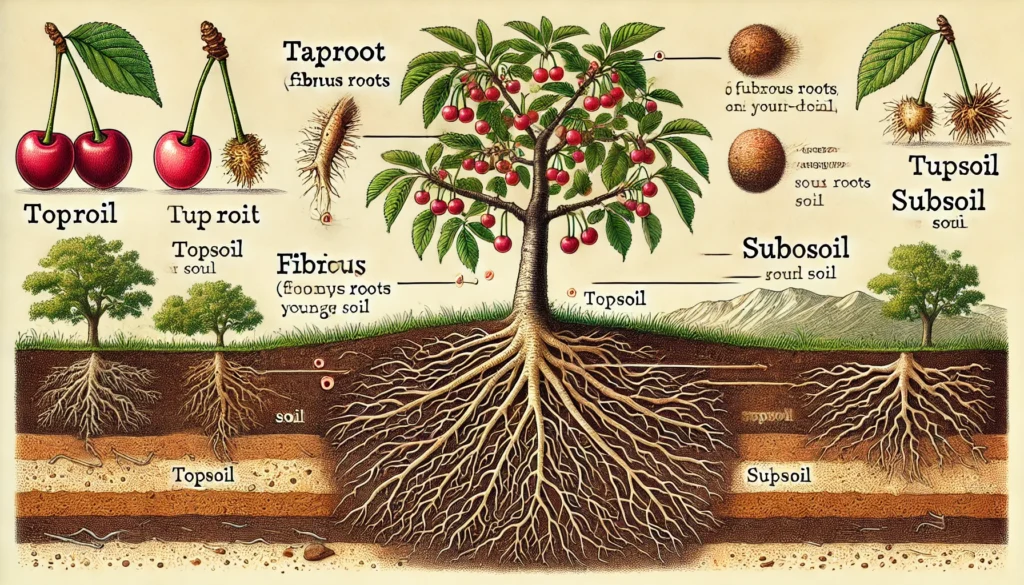
How to Prevent Cherry Tree Root Damage from Lawn Mowers: Essential Tips for Healthy Trees
Cherry trees are a beautiful addition to any garden, offering stunning blossoms and delicious fruit. However, one common threat to their health is root damage caused by lawn mowers. If you’ve ever accidentally run over your tree’s roots, you know just how detrimental it can be. So, how to prevent cherry tree root damage from lawn mowers becomes essential for maintaining your tree’s vitality. In this article, we’ll explore practical tips and strategies to protect your cherry tree’s roots from mower mishaps, ensuring it grows strong and healthy year after year.
Table of Contents
ToggleUnderstanding Cherry Tree Root System 
Cherry trees, like most fruit trees, have a distinctive root system that plays a crucial role in their growth and health. 
1. Root Structure 
The cherry tree’s root system is typically shallow but wide-spreading, with most of the roots lying within the top 3 feet of soil. 
- Fibrous roots: These are small, fine roots that spread outward and help in nutrient absorption.
- Taproot: In younger trees, a deep central root, known as the taproot, may form. Over time, the taproot often becomes less prominent.
2. Root Growth 
Cherry tree roots grow rapidly, especially during the first few years of the tree’s life. During this time, they spread outward to establish a stable base. 
3. Soil and Root Health 
The health of the roots depends heavily on the soil quality. Well-draining, loamy soil is ideal for cherry trees. 

4. Root Protection 
Cherry tree roots are sensitive to damage. When planting or transplanting, avoid disturbing the roots too much, as they can take time to recover. If you’re adding mulch, ensure it’s spread around the tree’s base without covering the roots directly. 
By understanding the structure and needs of the cherry tree root system, you’ll be equipped to care for it properly and enjoy its beautiful blossoms and delicious fruits!
Identifying Signs of Root Damage 
Roots are the foundation of your plants, and any damage to them can be detrimental to their overall health. Here’s how to identify the early signs of root damage and ensure your plants stay strong and thriving!
Yellowing Leaves
If the leaves start turning yellow, especially on the lower branches, it could mean the roots are struggling. Roots damaged by overwatering, pests, or disease can’t deliver enough nutrients, leading to yellowing.
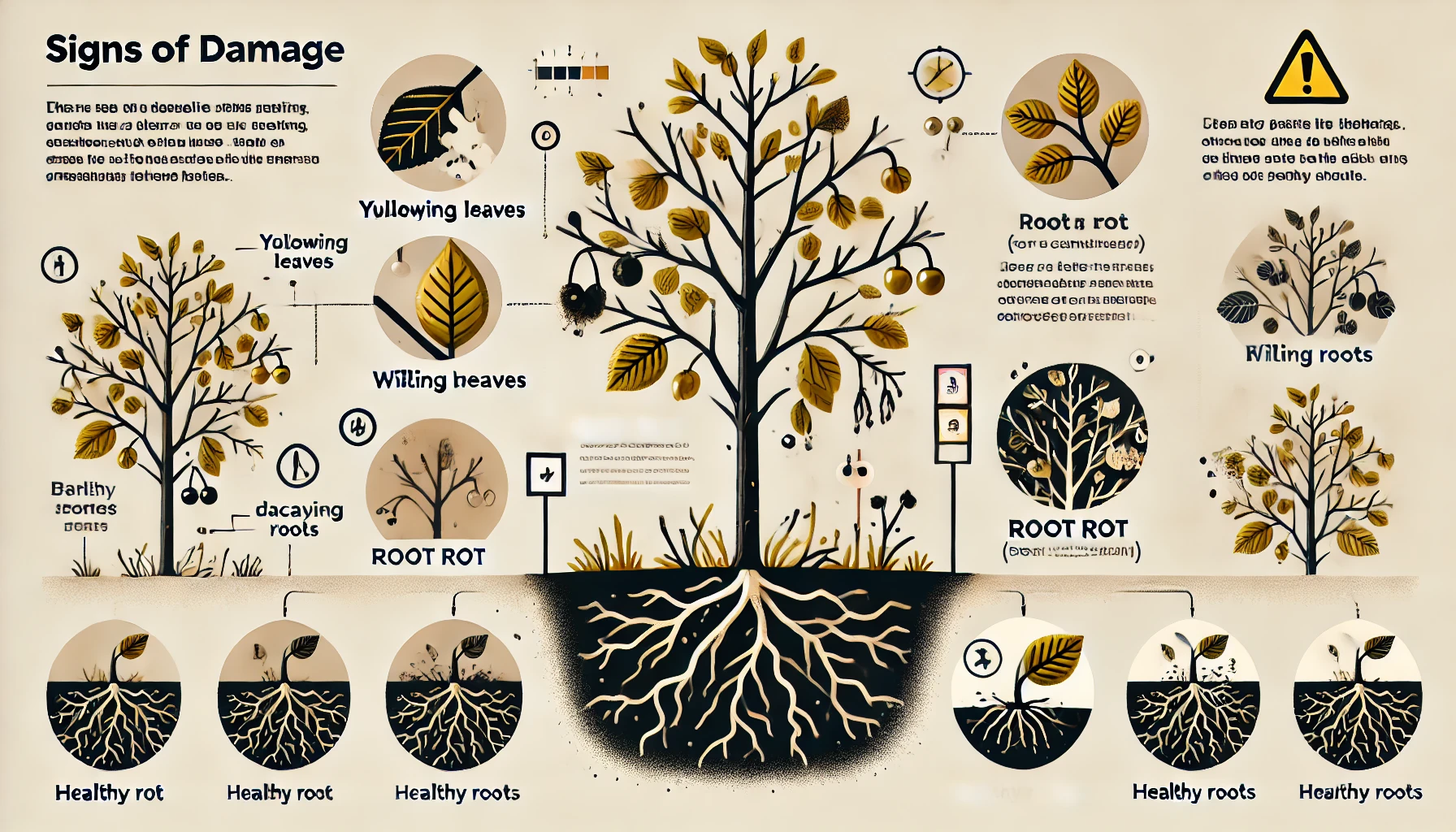
Wilting or Drooping
Despite proper watering, wilting is a major red flag! If the soil is moist but your plant still droops, it could indicate damaged roots are unable to absorb water properly.
Stunted Growth
Poor or stunted growth is often due to compromised roots. If your plant seems to have stopped growing or isn’t growing as quickly as expected, root damage could be the culprit.
Foul Smell
A rotten or unpleasant odor coming from the soil suggests root rot. This happens when roots are waterlogged and begin to decay, releasing a foul smell.
Leaf Drop
Excessive leaf drop, particularly when combined with other signs like wilting, can indicate that roots are not functioning properly. The plant may shed leaves to conserve energy.
Brown or Black Roots
Healthy roots are typically white or light tan. If you notice dark brown or black roots when inspecting the root ball, it’s a sign of root rot or fungal infection.
By staying alert to these signs, you can take action quickly to revive your plant. Whether it’s adjusting watering habits, treating with fungicides, or replanting in fresh soil, early intervention is key to saving your plants!
Tips for Preventing Root Damage from Lawn Mowers 
Protecting your plants from mower damage starts with smart lawn care practices! Follow these expert tips to keep your roots safe and your garden thriving:
Create Mower Barriers
Install physical barriers, like garden edging or stone borders, around your plants. This will prevent your mower from getting too close and damaging the roots.
Mow in Dry Conditions
Avoid mowing when the ground is wet or soggy. Wet soil can cause mower wheels to sink, increasing the risk of root damage.
Mower Height Adjustment
Set your mower at a higher setting to avoid cutting too close to the ground. This way, the mower will clear roots and avoid disturbing the soil around your plants.
Avoid Tight Corners and Narrow Paths
Take it slow and avoid sharp turns near garden beds. Tight maneuvers can result in unintentional collisions with plants, leading to root stress or breaks.
Use Push Mowers or String Trimmers
In areas with many plants, consider using a push mower or a string trimmer. These tools provide more control and allow you to avoid damaging delicate roots.
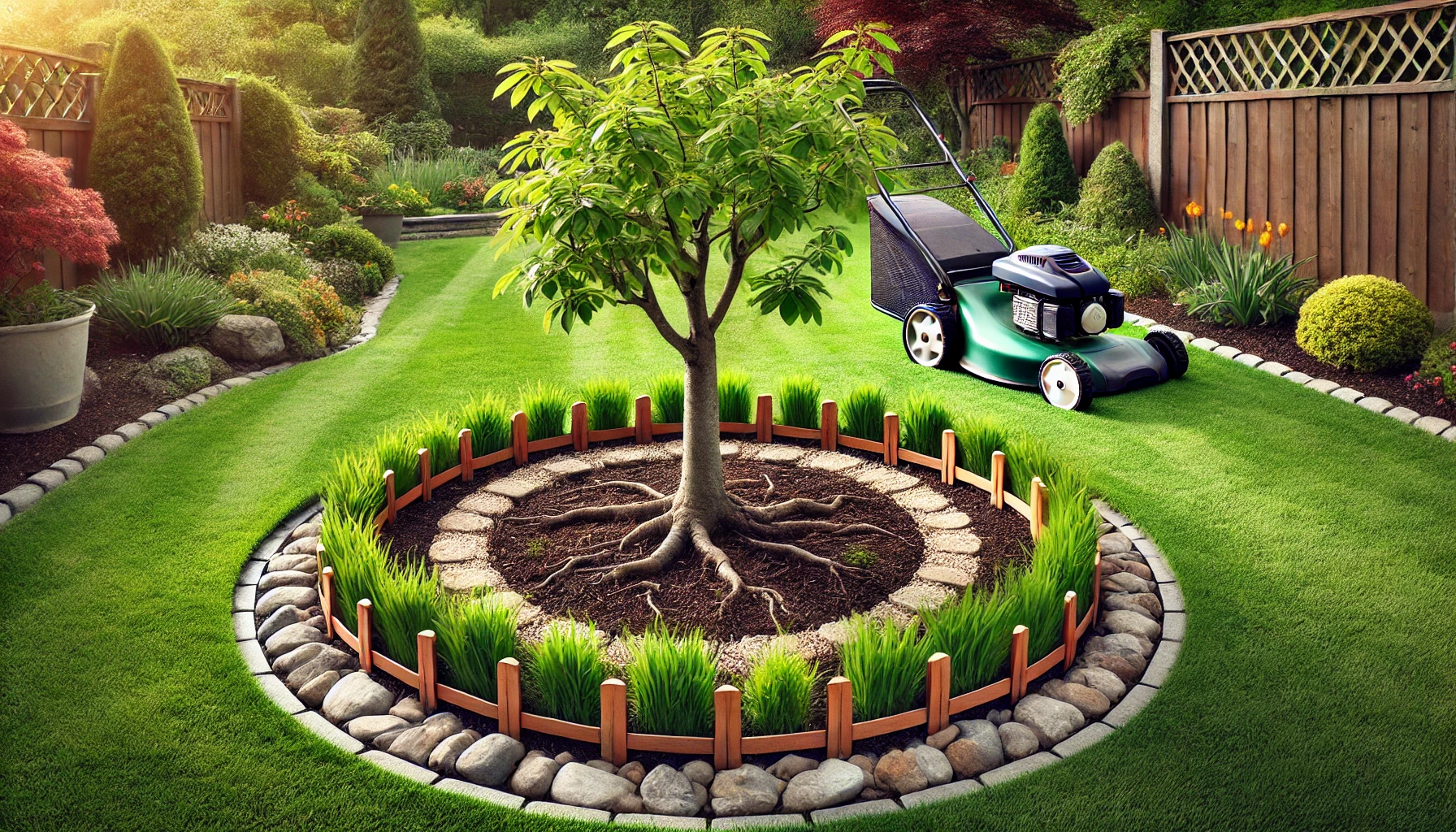
Mow Regularly and Strategically
Mowing frequently and strategically ensures that your lawn stays manageable and doesn’t require harsh cuts that could disturb roots. Keep the grass at a healthy length!
By following these tips, you’ll minimize the risk of root damage and keep your plants happy and healthy.
Creating a Safe Mowing Zone 
When it comes to mowing your lawn, safety should always be a priority. Here’s how to create a safe mowing zone:
Clear the Area
Remove any debris such as sticks, rocks, toys, or garden tools. These items can become dangerous projectiles if hit by the mower blades.
Check for Hazards
Walk through the area to check for potential hazards like uneven ground, low-hanging branches, or holes that could cause accidents.
Secure Pets and Kids
Keep children and pets inside or at a safe distance while mowing. Mowers can be noisy, and pets might get startled or run into the area unexpectedly.
Mark Boundaries
Use cones or markers to establish clear boundaries for your mowing area. This helps prevent the mower from accidentally going into flower beds or garden edges.
Mower Maintenance
Ensure that your mower is in top condition. Check the blades regularly and clean them to prevent clogging or uneven cuts.
By creating a safe mowing zone, you ensure a smoother, accident-free lawn care experience. Happy mowing!
The Role of Mulching in Root Protection 
Mulching is a simple yet powerful technique that protects plant roots, especially in extreme weather conditions. 
Insulation Against Temperature Fluctuations
Mulch acts as a natural insulator, keeping soil temperatures stable. During hot weather, it keeps roots cool, and in winter, it prevents the soil from freezing. This is vital for plants like trees and perennials that are sensitive to temperature extremes.
Moisture Retention
Mulch helps retain moisture in the soil, reducing the need for frequent watering. This is especially beneficial during dry spells, preventing the roots from drying out and ensuring they stay hydrated.
Weed Control
A good mulch layer can block sunlight from reaching weed seeds, helping to reduce competition for nutrients and water. This keeps your plant roots free from unnecessary stress.
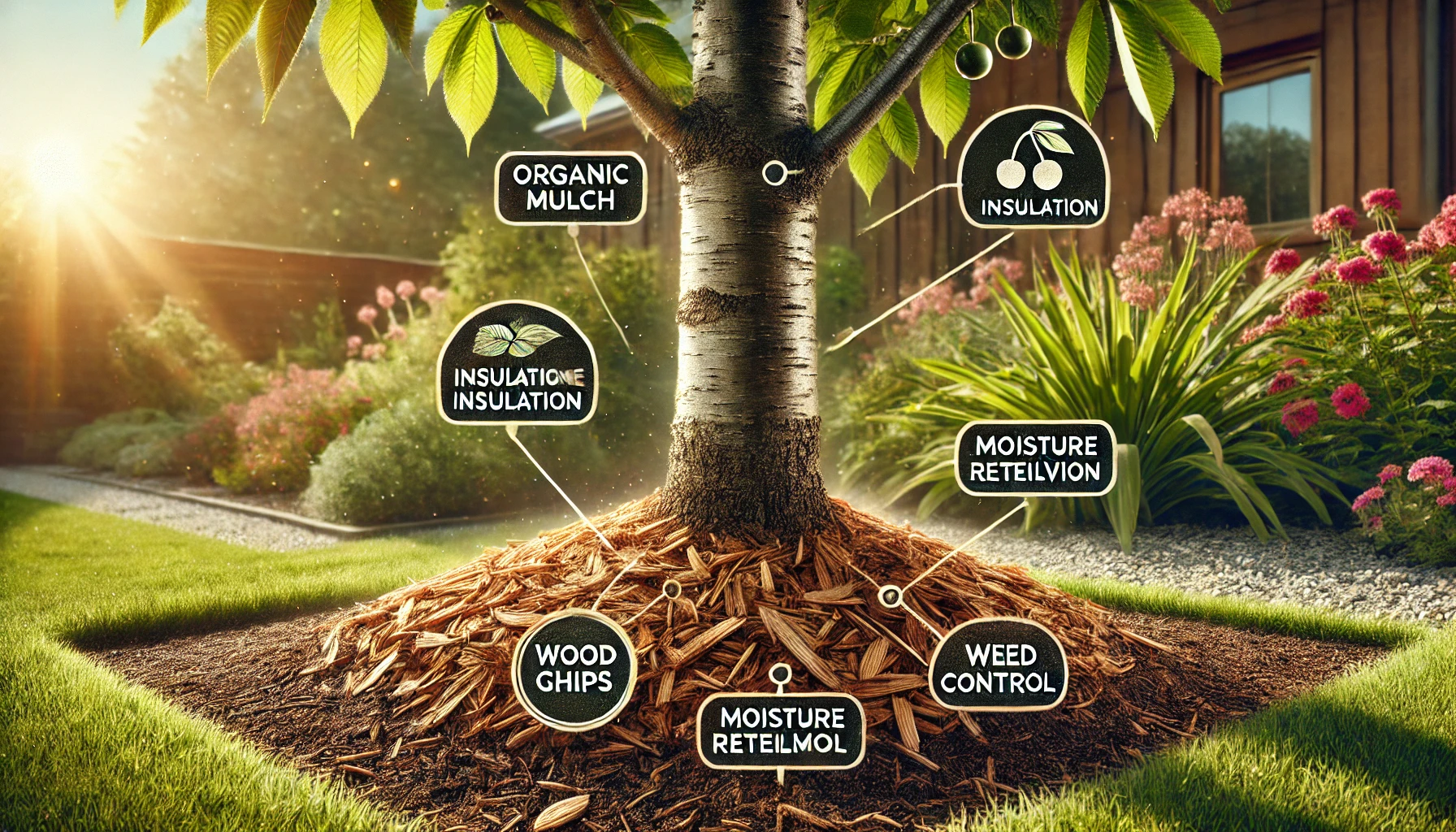
Soil Structure Improvement
Over time, mulch breaks down and enriches the soil with organic matter. This enhances soil structure, helping roots grow deeper and more vigorously. It also improves drainage and nutrient availability.
Protection from Erosion
Mulch helps prevent soil erosion, especially in areas with heavy rainfall or on sloped ground. It forms a barrier that shields the soil from being washed away, which in turn protects the roots from exposure.
For best results, use organic mulches like wood chips, bark, or straw, and apply a 2-3 inch layer around your plants. This simple practice ensures your plant roots stay strong and healthy all year long.
Regular Tree Care and Maintenance 
Caring for your tree isn’t just about planting it—it’s a lifelong commitment to ensuring it thrives. Here’s how you can keep your tree healthy:
Watering 
Mulching 
Pruning 
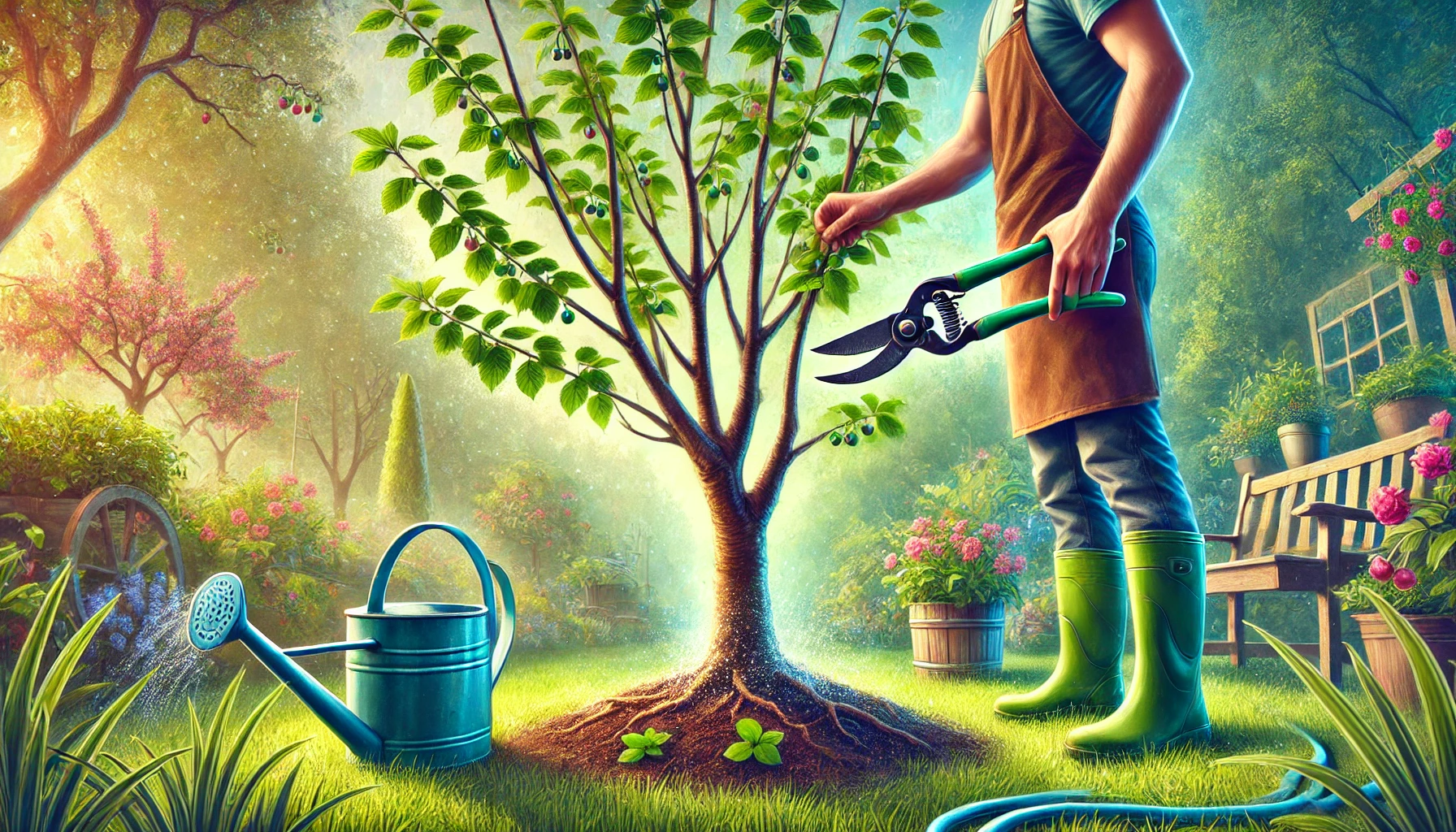
Fertilizing 
Pest and Disease Control 
Support 
By following these simple yet effective steps, your tree will flourish for years to come!
What to Do if Root Damage Occurs 
Root damage can be alarming, but don’t worry—plants are resilient! If you notice your plant’s roots have been harmed, follow these steps to help it recover and thrive again:
- Assess the Damage
- Carefully check the roots for any signs of rot, injury, or breakage. If you find mushy, dark roots, trim them away with sterile scissors.
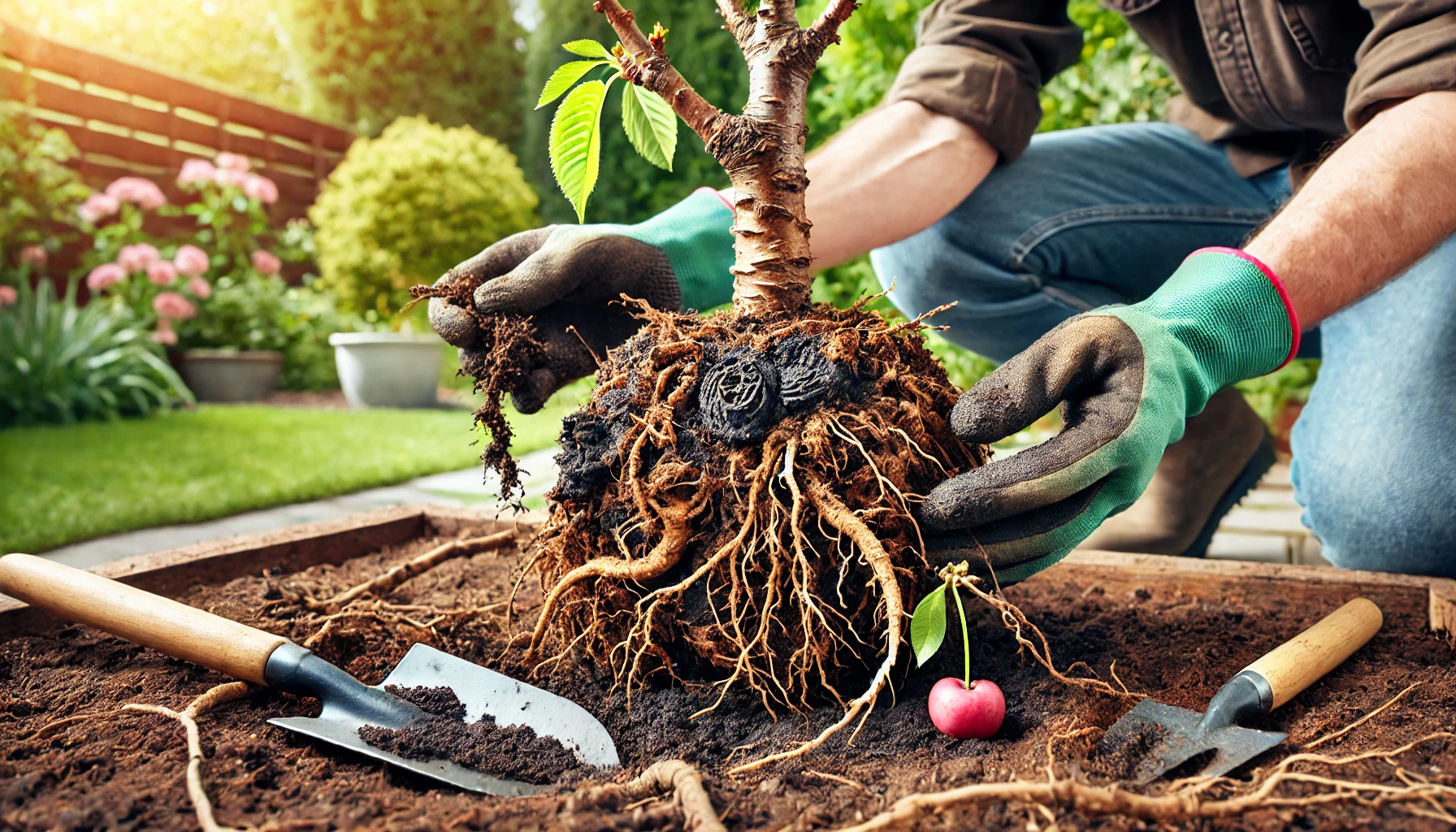
- Repot the Plant
- Choose a pot slightly larger than the root ball and fill it with fresh, well-draining soil. This will help the roots establish themselves in a healthier environment.
- Water Carefully
- Avoid overwatering, as damaged roots are more susceptible to rot. Ensure the soil is moist but not soggy.
- Provide Support
- If the damage is extensive, consider using a stake or support system to prevent any strain on the weakened roots while they heal.
- Monitor Growth
- Keep an eye on the plant for new growth signs. If it starts sprouting fresh leaves or stems, it’s a good indication that it’s recovering.
By following these steps, you’ll give your plant the best chance to bounce back from root damage and flourish once again!
Conclusion 
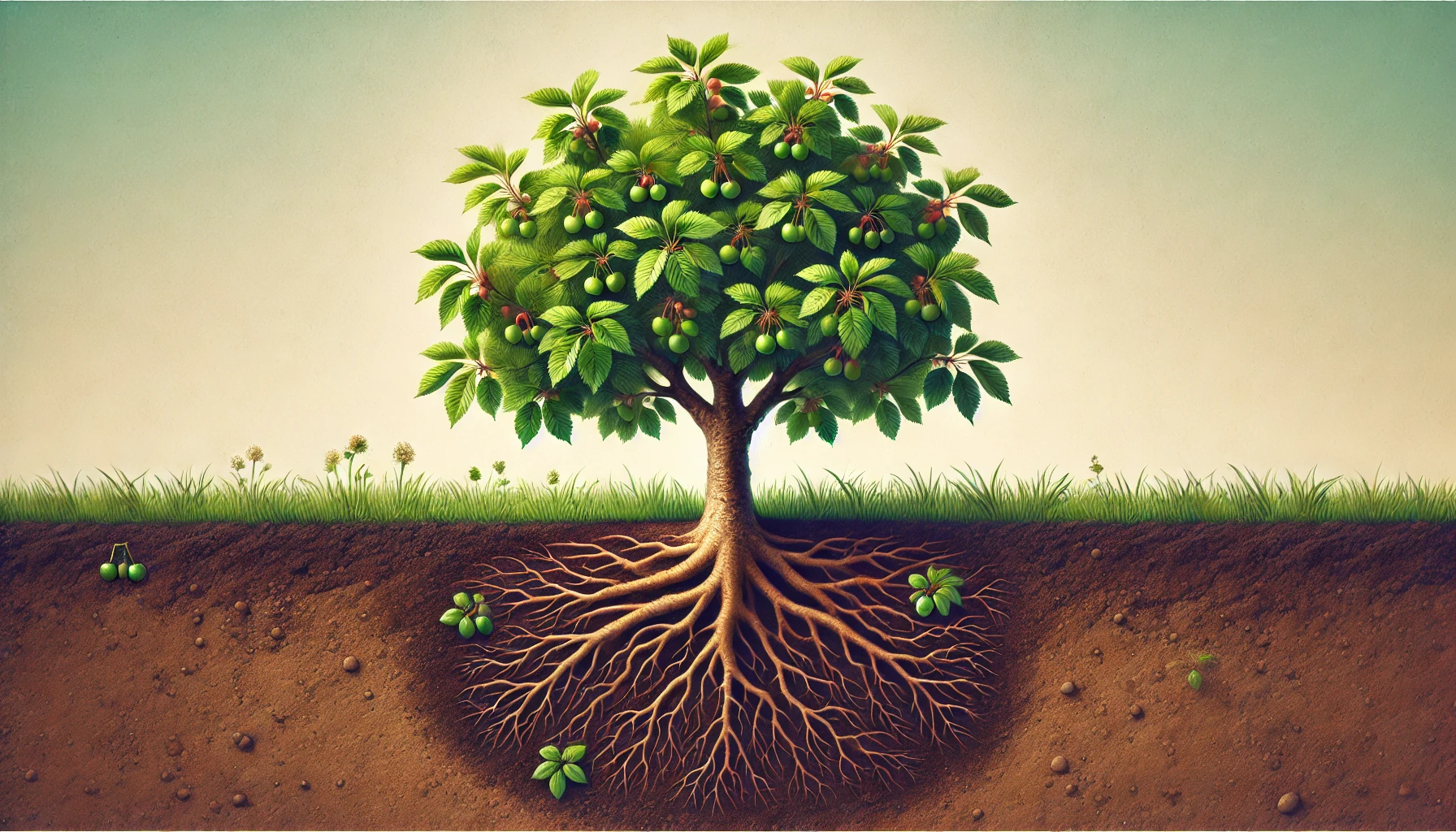
Protecting your cherry tree’s roots from lawn mower damage is essential for its long-term health and productivity. By understanding your tree’s root system and following the preventive measures outlined in this article, you can help ensure that your cherry tree thrives year after year. Remember, a little care and attention go a long way in maintaining a healthy tree, whether it’s creating a protective barrier, using a string trimmer, or applying mulch to protect the roots. Taking these steps not only helps your tree grow strong but also supports it in producing the best fruit possible. Prioritize root protection, and your cherry tree will reward you with years of healthy growth and bountiful harvests.
Frequently Asked Questions(FAQ)
Why is it important to prevent lawn mower damage to cherry tree roots?
Lawn mower damage to cherry tree roots can weaken the tree, hinder its growth, and make it more vulnerable to pests and diseases. Protecting the roots ensures the tree remains healthy, strong, and productive, promoting better fruit yields.
What are the signs that my cherry tree’s roots have been damaged by a lawn mower?
Signs of root damage include stunted growth, wilting leaves, yellowing foliage, and poor fruit production. If the roots are heavily damaged, the tree may also exhibit leaning or instability in the ground.
How can I protect my cherry tree roots from lawn mowers?
To prevent root damage, you can install a protective barrier around the base of the tree, use a string trimmer instead of a mower near the tree, mulch around the tree’s root zone, and avoid driving or placing heavy equipment near the root system.
Can I use grass around the cherry tree to prevent root damage?
While grass around the tree may provide some ground cover, it’s important to regularly trim it to avoid accidental mower contact with the roots. Adding a layer of mulch or creating a tree ring around the trunk can be more effective in protecting the roots.
What type of mulch is best for protecting cherry tree roots?
Organic mulches like wood chips, bark, or straw are ideal. Apply a 2-4 inch layer of mulch around the base, making sure to leave a gap around the trunk to prevent rot. Mulch helps retain moisture and keeps the ground cool, while also protecting the roots from mower damage.
How often should I check for root damage?
It’s a good idea to inspect your tree’s root zone every few months, especially after mowing season, to ensure the roots are healthy and undisturbed. Early detection of damage allows for quick action to protect your tree.
Can root damage be repaired once it happens?
Once root damage occurs, the tree might show signs of distress, but it’s important to address the issue quickly. You can help the tree recover by improving its environment, adding mulch, and minimizing further stress, but complete recovery depends on the extent of the damage.


























